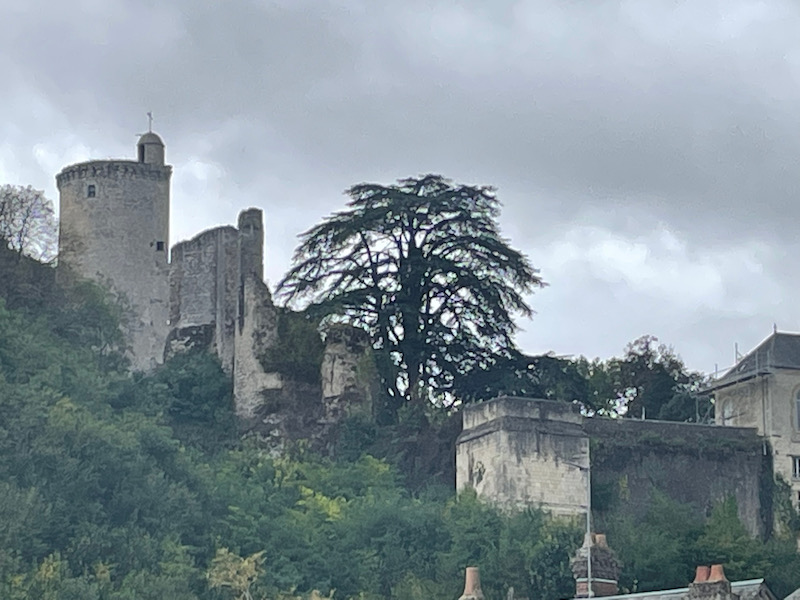Our Blog - Loire Valley Trip - Vendôme, France
Vendôme appears originally to have been a Gallic oppidum, replaced later by a feudal castle, around which the modern town arose. Christianity was introduced by Saint Bienheuré in the 5th century, and the important abbey of the Trinity was founded about 1030.
Porte Saint-Georges built in the 14th century and remodeled in a Renaissance style in the 16th century, it is the only remaining gate (out of 4 gates) of the fortified city. Many famous people have passed through but the most famous was Emperor Napoleon I. In fact, he passed through several times ... in August 1808 on his way to Paris and then back through in October of the same year on his way to Spain. January 1809 he passed by, again on his way to Paris. His last time was on June 30, 1815, on his way to his 10-month exile on the Island of Elba.

Place du Marché is where merchants would come and set up a stand to sell their products. At the end of the 19th century, the city demolished houses around the place to make it larger and built a covered Baltard-style market.
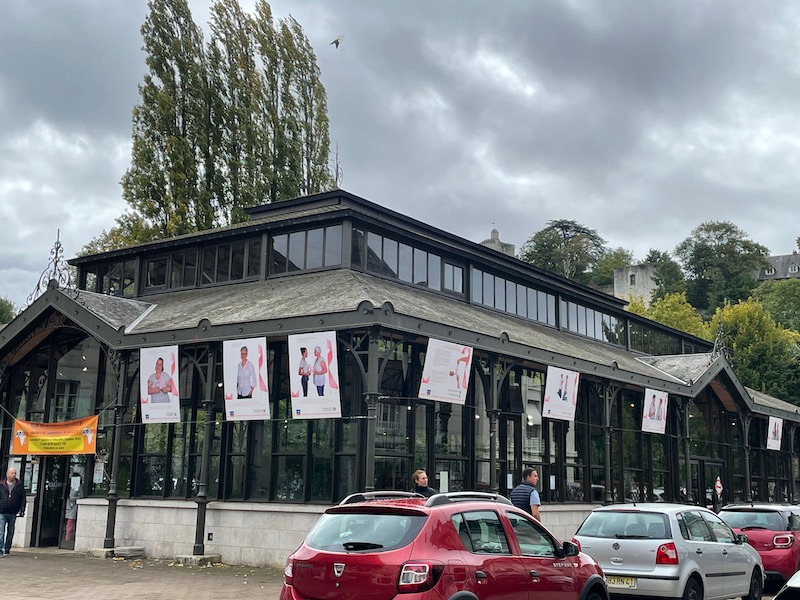
The statue of Jean-Baptiste Donatien de Vimeur, Marshal of Rochambeau, who was born here in Vendôme in 1725. He fought alongside George Washington and played the decisive role in helping the US defeat the British army at Yorktown in 1781 during the American Revolution. Upon his return to France, he was honored by King Louis XVI and named a Marshal of France. In a little reversal of fortune, he was arrested during the Reign of Terror in 1793–94 and narrowly escaped the guillotine.
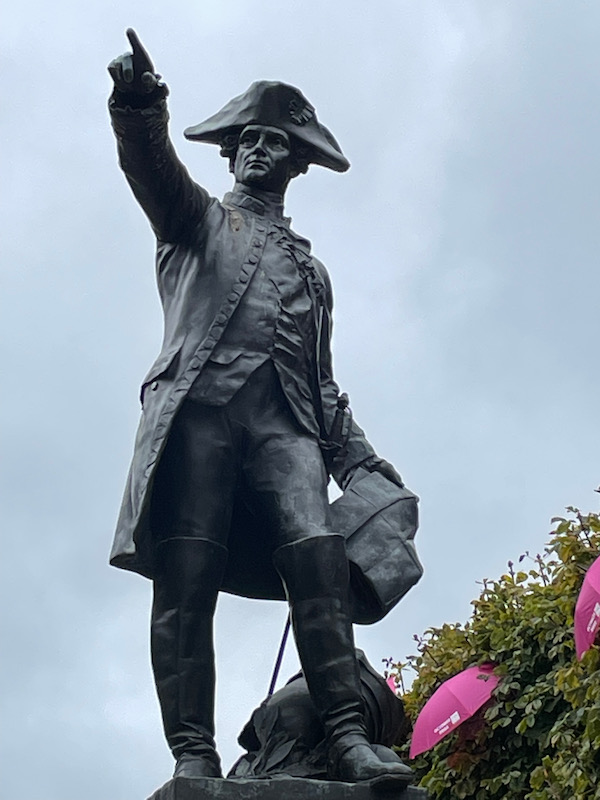
The Abbaye de la Trinité looks to be a very Flamboyant Gothic church, bit there are a few elements of the first Romanesque church. You can see the contrast between the late-Romanesque/early-Gothic bell tower from the 12th century and the decorative tracery on the Flamboyant Gothic main façade, which was completed in 1507. One of the most interesting parts of the façade for me is the tympanum over the door, which doesn't have carved statues depicting bible stories, but instead, are Flamboyant stained glass.
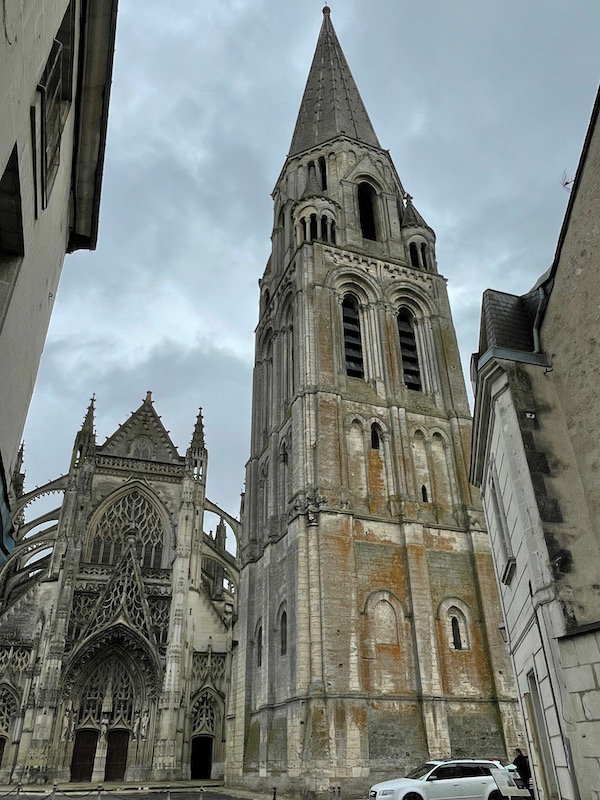
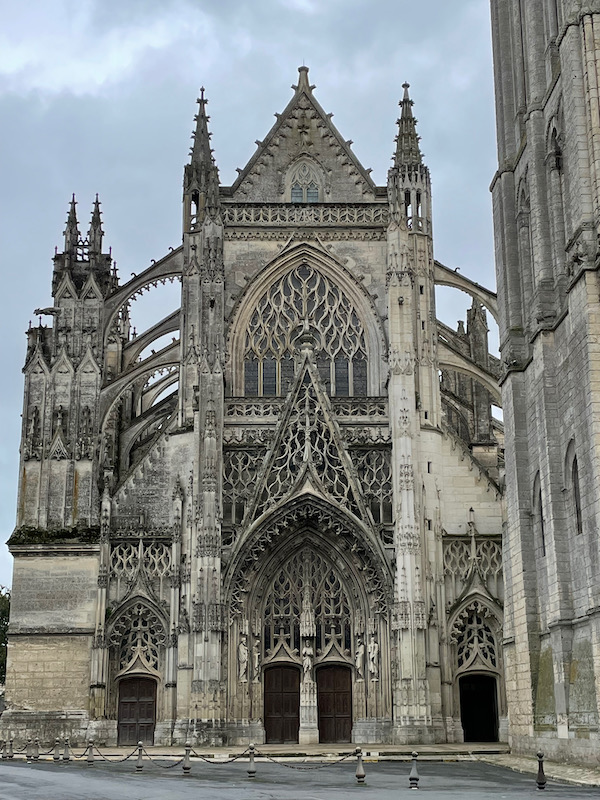
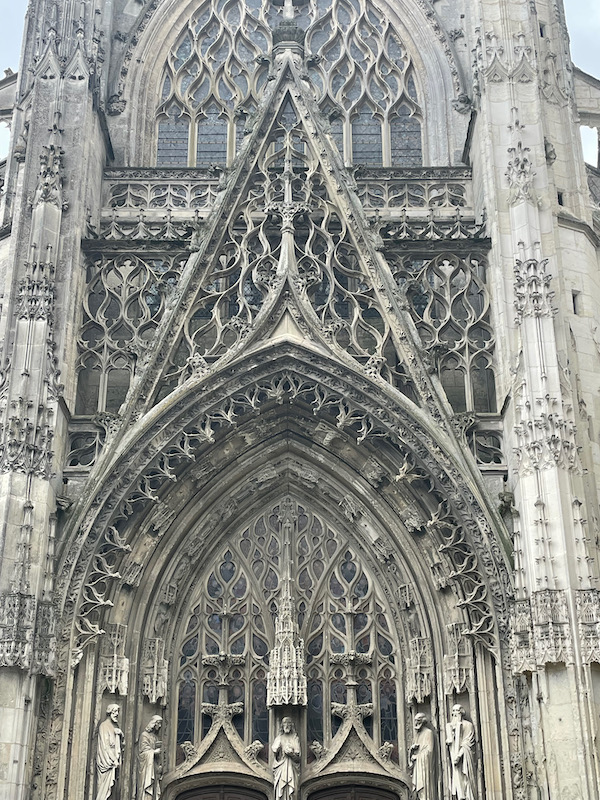
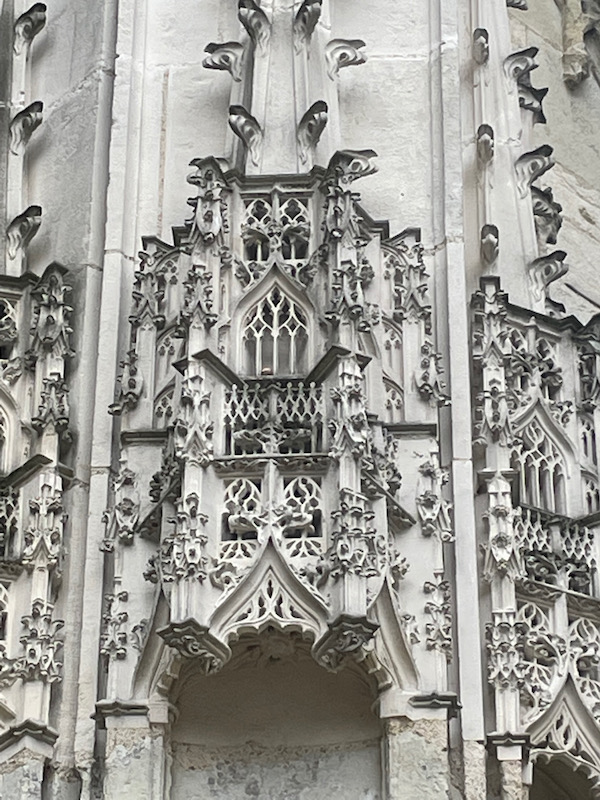
Inside you can see the long name with the very high, Gothic vaults, and side aisles. And here is the stained glass tympanum over the front door from the inside.
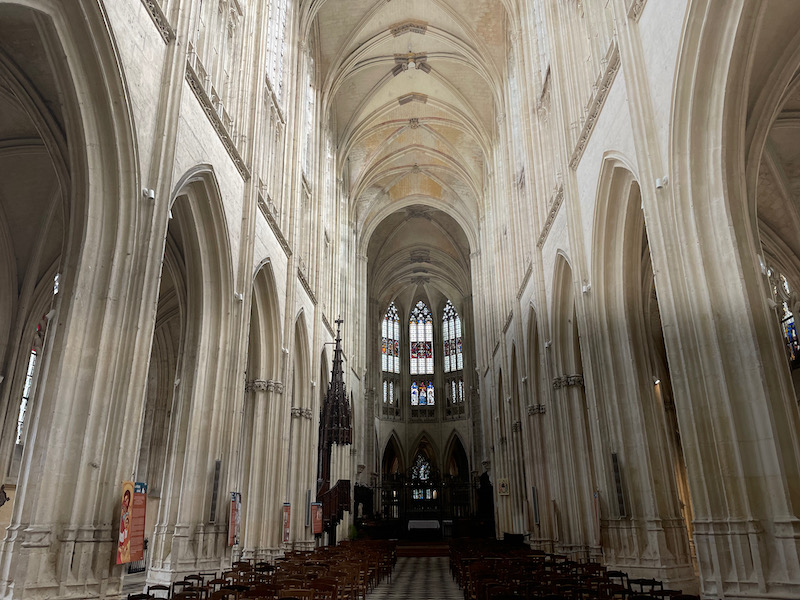
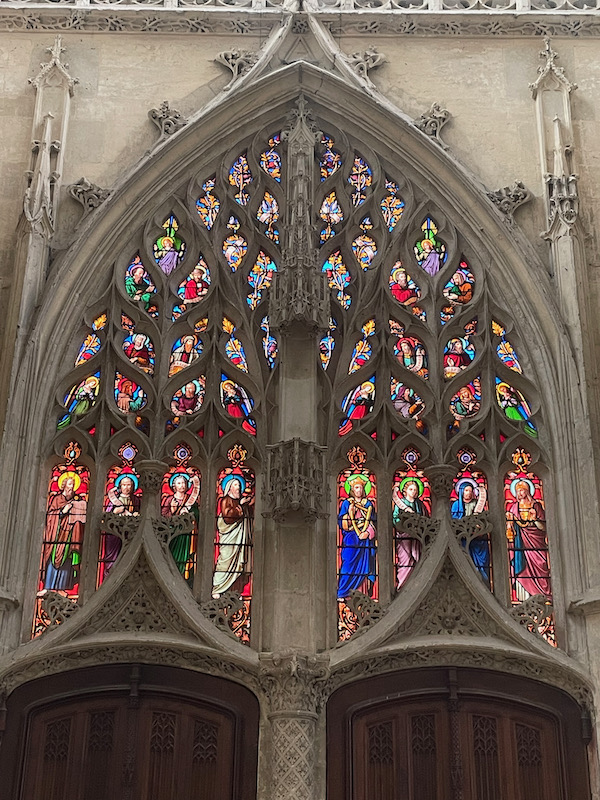
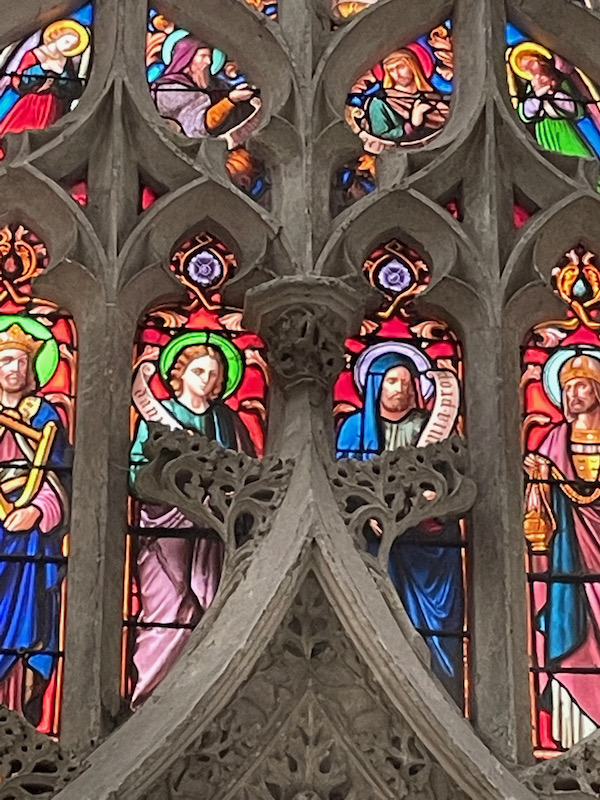
A couple stained-glass windows, some of them dating to the 16th century.
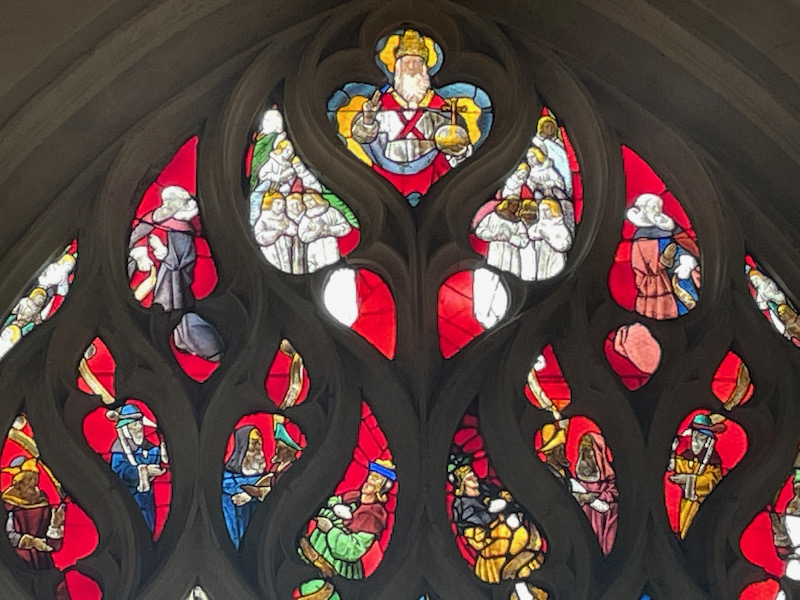
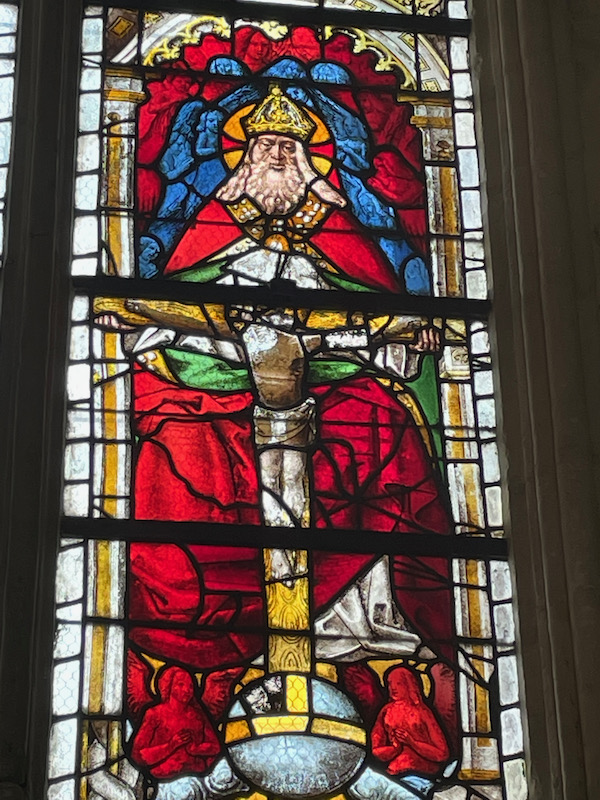
This window, in the Chapelle of the Vendôme Saints, shows Saint Michael (killing the dragon), Saint Jacques, and then Saint Christopher. This window is a bit older, from the end of the 13th century.
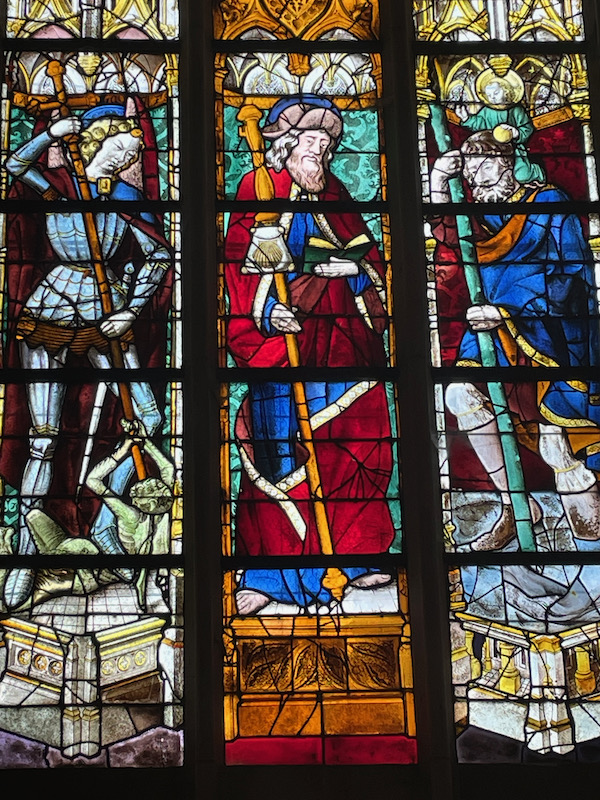
Then a peek into the cloister to get a nice view of the flying buttresses. The cloister also contains the Chapter House, with frescoes that date from the 11th and 12th centuries. These were discovered under a wall in 1972. Unfortunately, while we could see a little bit of them, the gate was locked and we couldn't get much closer.
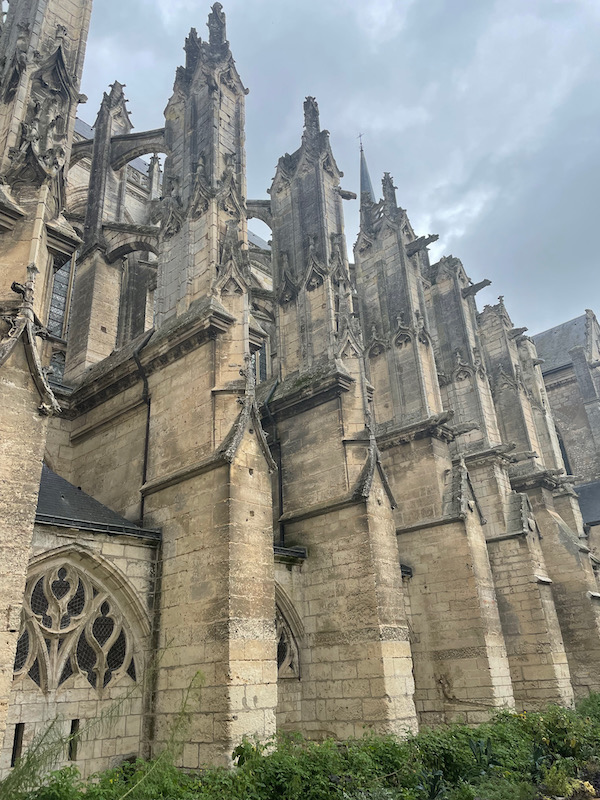
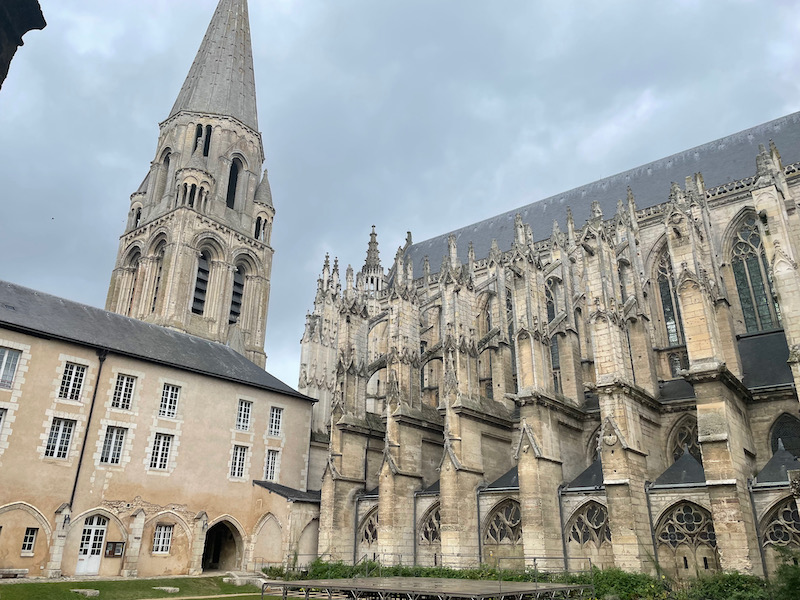
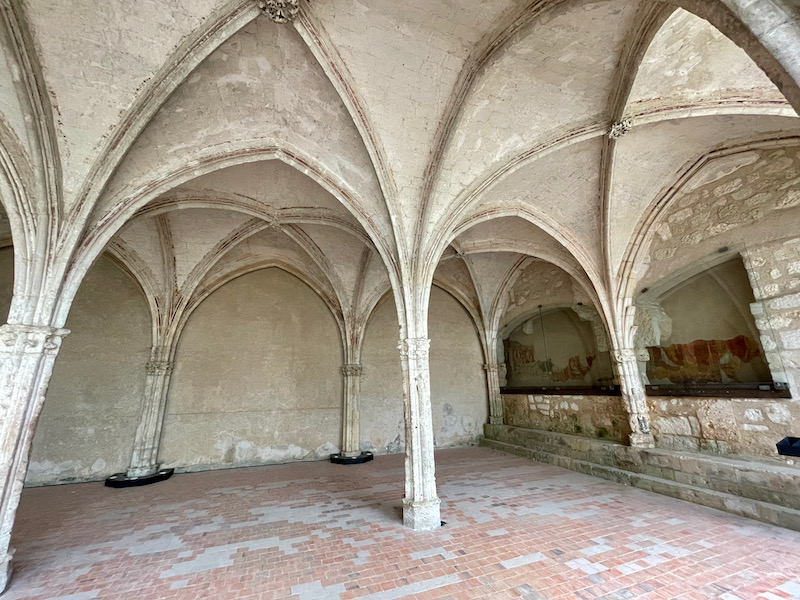
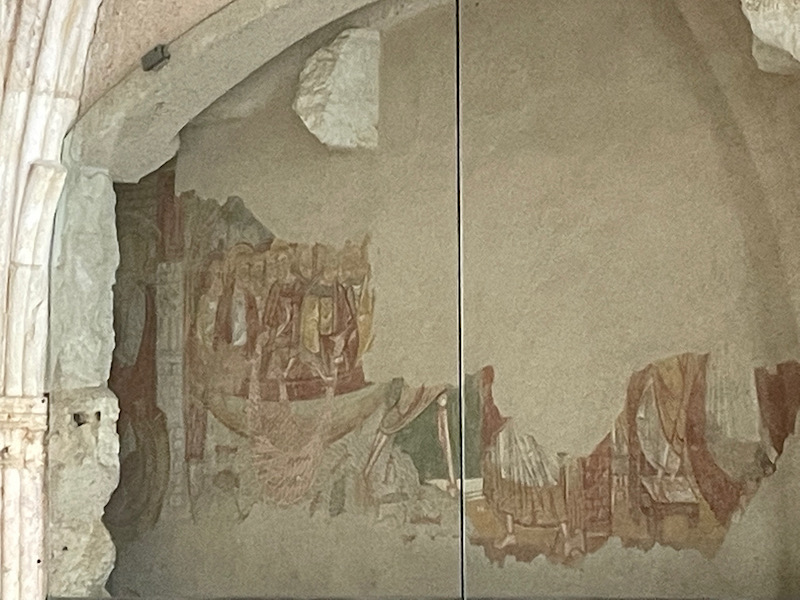
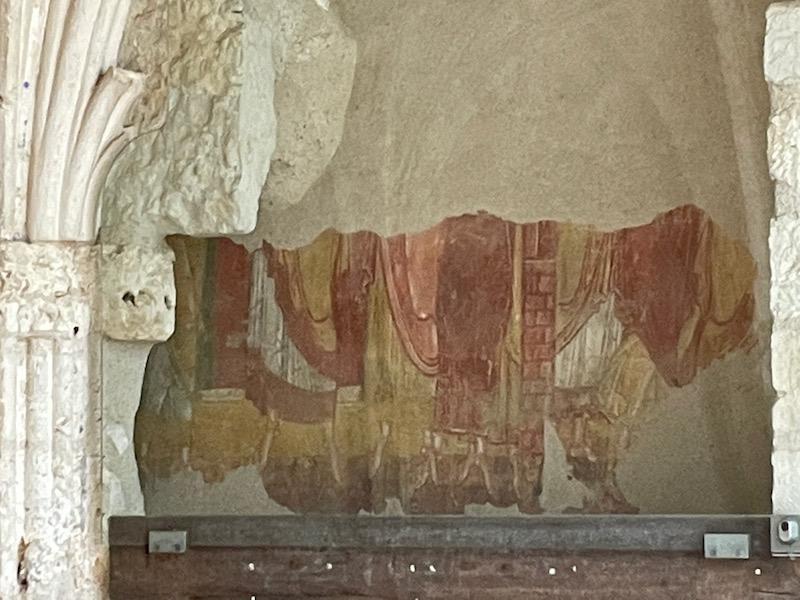
We didn't bother trying to go to this chateau, also in ruins. Supposedly, parts of the castle are halfway down the hill, having collapsed in 2001.
